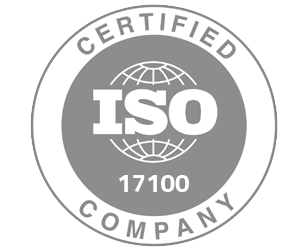
Transcreation: An Overview of Creative Translation
Words alone don’t sell an idea—emotion, culture, and context do. That’s where transcreation steps in, blending translation with creative adaptation to ensure a message resonates across languages without losing its essence. More than just translating words, transcreation reimagines content so that it evokes the same emotions, impact, and cultural relevance in a new market. This article explores the concept of transcreation, its key applications, and how it differs from traditional translation.
What is Transcreation?
Transcreation is a fusion of the words "translation" and "creation". It describes copywriting content in a source text that needs to be made coherent and relevant in a new language. It is sometimes called "creative translation" since it requires a combination of translation skills and creative writing abilities, as the goal is to produce a version of the text that is culturally relevant and effective for the target audience.
Transcreation combines elements of translation with those of copywriting. The goal is to create a localized version of the source material that conveys the same message but does so in an appropriate way for the target audience. This means that a transcreation translator must have an intimate knowledge of both the source language and culture while also understanding the target language and culture. They use this knowledge to create content that resonates with the target audience while staying true to the original intent of the source material.
Traditional Translation vs. Transcreation: Key Differences
Traditional translation focuses on accurately converting text from one language to another while maintaining its original meaning, structure, and intent. It is primarily used for documents where precision and consistency are essential, such as legal contracts, medical records, and technical manuals. Transcreation, however, involves a more creative adaptation of content to ensure it resonates with the cultural and emotional expectations of the target audience. Rather than a direct word-for-word translation, transcreation reimagines the message, adjusting tone, idioms, humor, and context to maintain the original impact. This approach is especially important for marketing campaigns, brand messaging, and creative content, where engagement and relatability play a crucial role. While traditional translation prioritizes linguistic accuracy, transcreation focuses on cultural and emotional effectiveness, ensuring the message remains relevant and compelling across different languages and regions
Types of Transcreation Services
1. Advertising and Marketing Transcreation
Marketing campaigns rely on persuasive messaging, emotions, and cultural relevance. Transcreation ensures that slogans, taglines, and promotional content are not only accurately translated but also adapted to fit the cultural expectations of the target market. This is particularly important for global brands launching campaigns in multiple languages.
2. Website and Digital Content Transcreation
Website content, including landing pages, product descriptions, and blog articles, often requires transcreation to maintain its effectiveness across different regions. This includes adjusting wording, visuals, and calls to action to align with local consumer behavior and cultural preferences.
3. Brand Messaging and Corporate Communications
A company’s brand identity is built on carefully crafted messaging. Transcreation ensures that mission statements, value propositions, and corporate communications maintain consistency and appeal across different languages while adapting to cultural differences.
4. Social Media and Content Marketing Transcreation
Social media content must be engaging and relatable to specific audiences. Transcreation plays a crucial role in adapting social media posts, captions, and multimedia content while considering local trends, humor, and idiomatic expressions.
5. Literary and Creative Writing Transcreation
Transcreation is widely used in literature, poetry, and storytelling to maintain the essence, style, and emotional depth of the original work. This goes beyond simple translation to ensure that metaphors, wordplay, and cultural references make sense in the target language.
6. Video, Subtitling, and Voiceover Transcreation
For films, advertisements, and online videos, transcreation helps adapt scripts, subtitles, and voiceovers to suit linguistic and cultural preferences.
7. Product Packaging and Labeling Transcreation
Packaging design, product names, and slogans often require transcreation to ensure they are appealing and appropriate for different markets. This prevents potential misinterpretations and aligns with consumer expectations in specific regions.
8. Gaming and App Transcreation
Video games and mobile applications often include dialogues, narratives, and interactive elements that must be culturally adapted to enhance user experience. Transcreation ensures that humor, references, and instructions remain engaging and relevant.
9. Business and Legal Transcreation
While legal translation is typically precise and technical, certain business and legal documents, such as corporate presentations or international contracts, may require transcreation to align with different cultural and professional norms while retaining accuracy.
10. E-learning and Training Materials Transcreation
Educational content, including training manuals, instructional videos, and e-learning courses, benefits from transcreation to ensure that concepts are communicated effectively to learners from different linguistic and cultural backgrounds.
Transcreation goes beyond standard translation by adapting content to align with cultural expectations and audience preferences while preserving its original intent. This approach is particularly valuable in marketing, branding, and creative industries, where engagement and emotional impact play a key role. As businesses and content creators continue to expand globally, transcreation remains an important tool for maintaining relevance and consistency across languages and markets.







